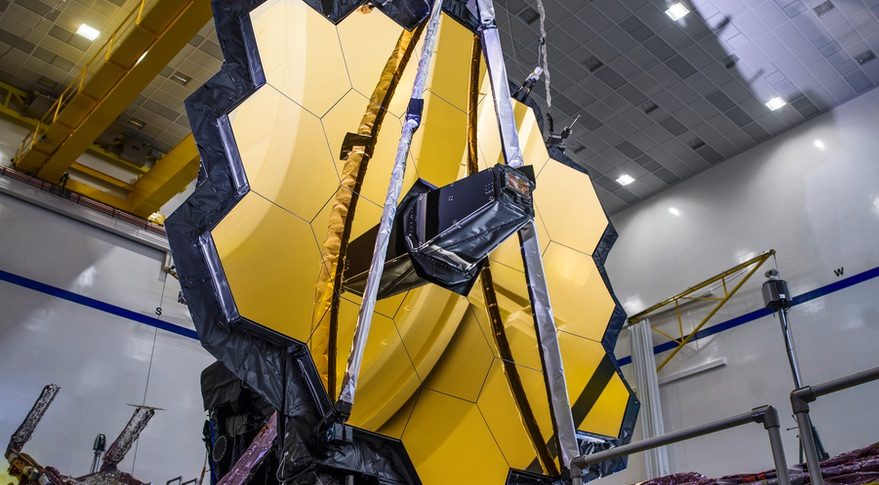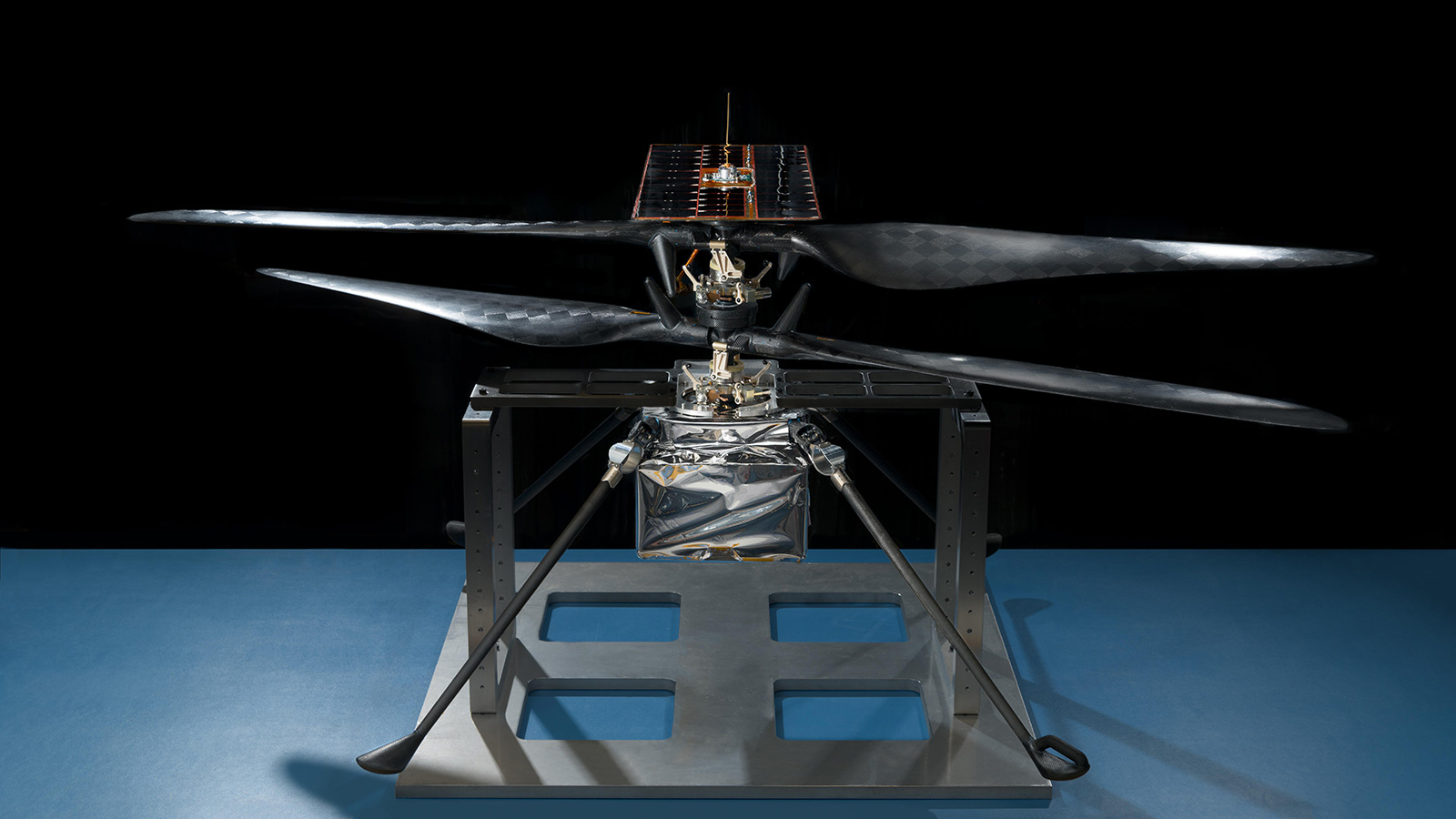Without doubt the big news for this month is the successful conclusion of the Space X crew demo 2 manned mission. The mission of astronauts Bob Behnken and Doug Hurley began back on the 30th of May 2020 as their Space X Dragon capsule blasted off from Kennedy Space Center in Florida. The very next day the spacecraft followed up its successful launch by docking at the International Space Station (ISS). For the last two months Behnken and Hurley have served as regular members of the ISS crew with Behnken even participating in two EVAs.
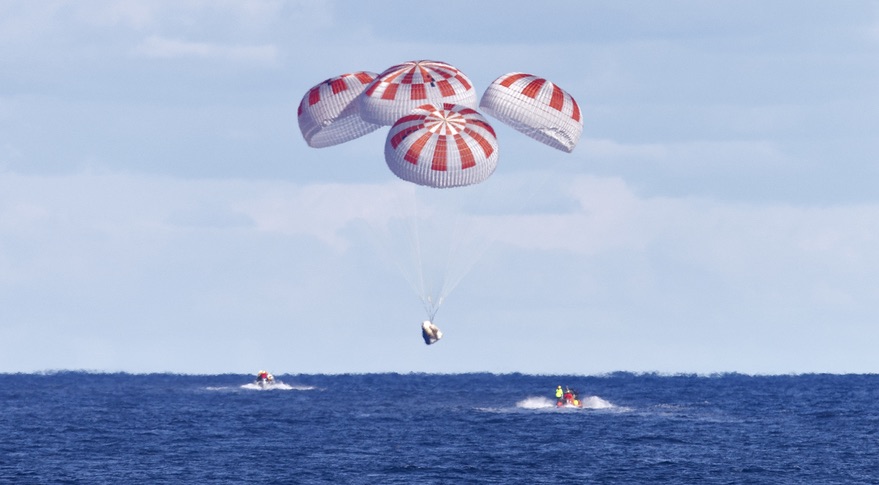
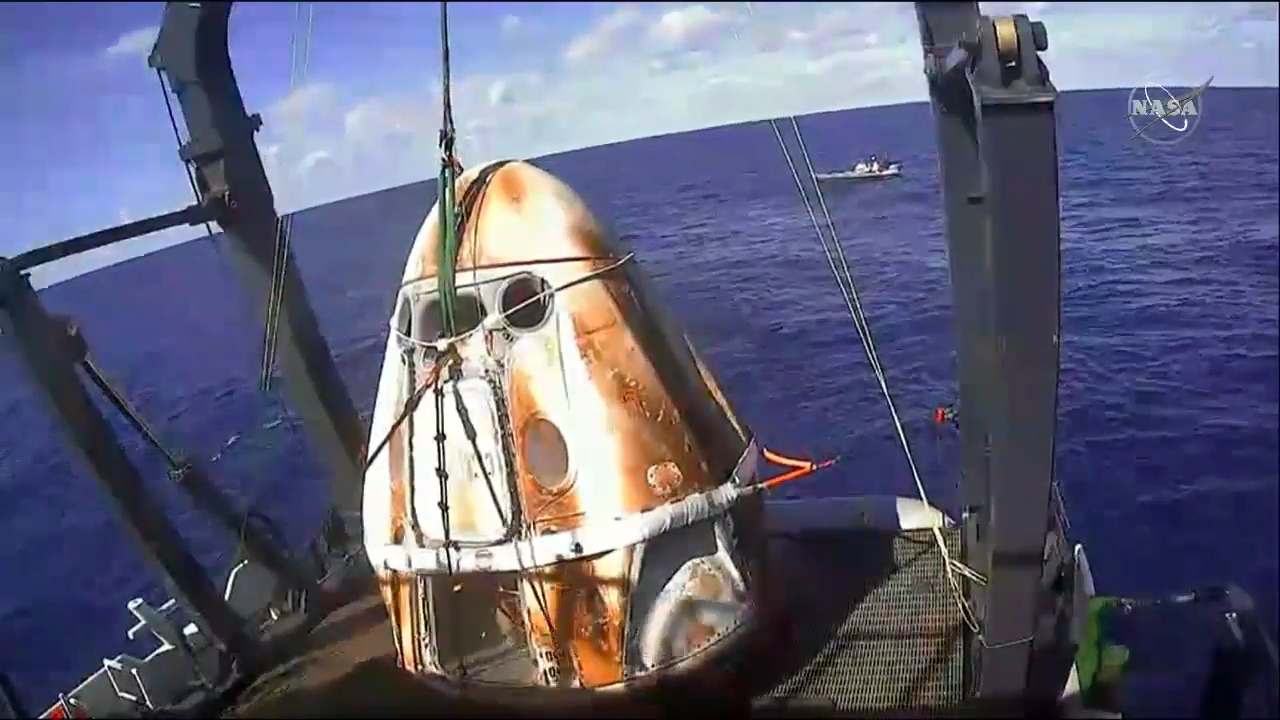
The mission of Space X crew demo 2 however was to demonstrate the ability of the Dragon capsule to take astronauts into, and back from space. So in order to complete their mission on the first of August Behnken and Hurley climbed back aboard their capsule and undocked from the ISS. The next day the Dragon fired its retro-rockets to slow its orbital speed so that it could reenter the atmosphere.
The whole operation went without a hitch; the capsule endured its fiery descent caused by friction with the atmosphere before first a pair of drogue parachutes and then four big main chutes brought the capsule velocity to less than 15kph. The most notable part of the whole reentry procedure was that this was the first American manned splashdown in 45 years. (The space shuttle you may recall, landed like an airplane on a runway).
So what’s next for the Space X Crew Dragon spacecraft? Well remember this mission was actually the last of the demonstration missions required by NASA to qualify the Dragon for taking their astronauts back and forth to the ISS. The next mission will officially begin NASA’s Commercial Crew Program with a mission to the ISS. That launch, the commercial crew 1 mission is currently scheduled for 23 October 2020. NASA astronauts Michael Hopkins, Victor Glover and Shannon Walker will be joined by Japanese astronaut Soichi Noguchi for a full six-month tour aboard the ISS.
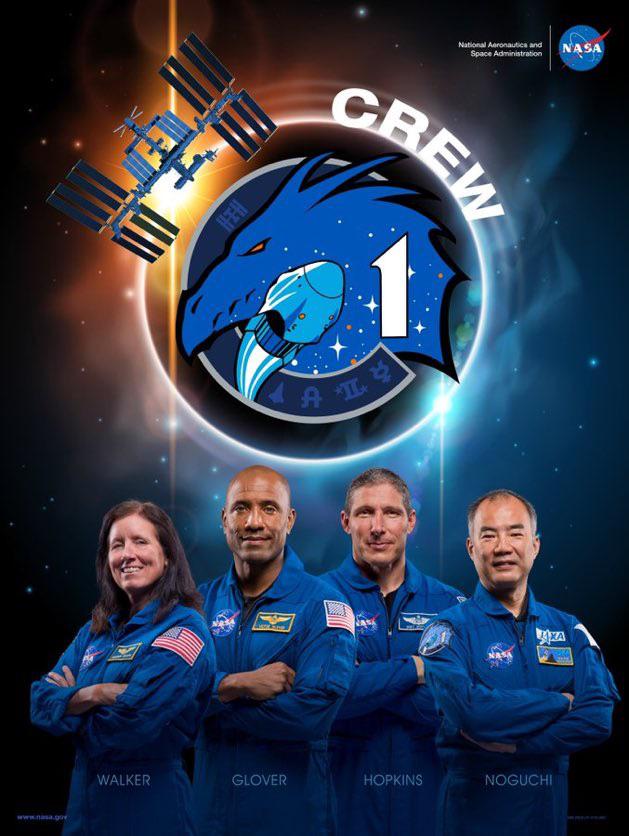
And NASA and Space X have also just announced the crewmembers for the commercial crew 2 mission scheduled for the spring of 2021. NASA astronauts Shane Kimbrough and Megan McArthur will serve as mission commander and pilot respectively. Japanese astronaut Akihiko Hoshide and European astronaut Thomas Pesquet will join Kimbrough and McArthur as mission specialists.
And the Space X corporation has even more news to celebrate, on August the 4th the SN5 prototype of Space X’s planned Starship rocket successfully completed its first short powered flight. Now Space X has had its share of problems in previous attempts at this first test flight. While one of the earlier prototype simply collapsed under its own weight several others actually exploded in spectacular fashion. But engineering is trial and error and eventually Space X got it right. Now this first test was only a short 150m hop but if you follow the link below to the youtube video below you’ll see that the rocket was under complete control the entire flight.https://www.youtube.com/watch?v=s1HA9LlFNM0
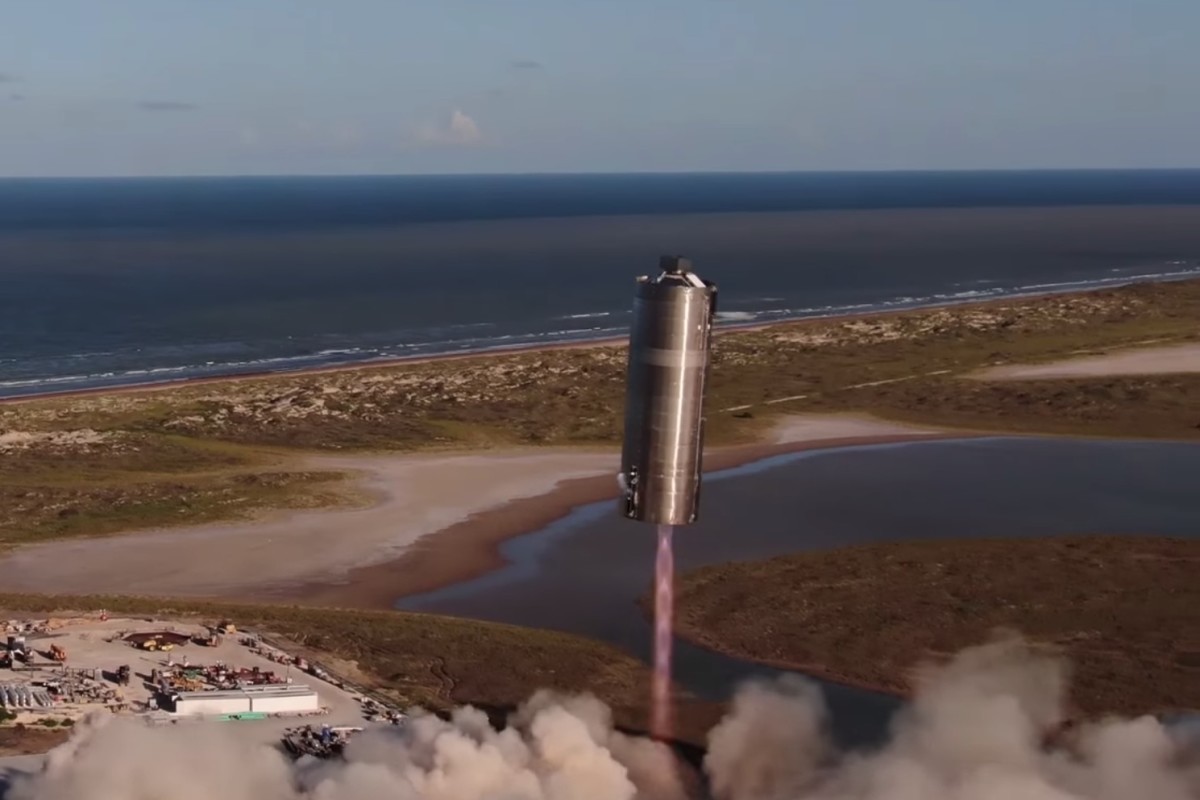
Still, this is only the beginning, the final starship rocket envisioned by Space X founder Elon Musk is projected to be 120m in height, four times that of its SN5 prototype. So there’s still a lot of work still to do before Space X can even begin its long term plans for using the starship rocket for the colonizing of the Moon and Mars.
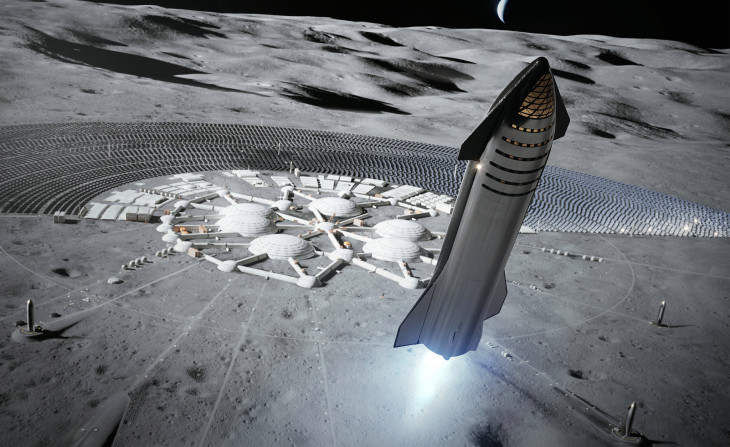
Believe it or not there is some space news that doesn’t deal with Space X. On July 30th NASA launched its latest rover on a mission to Mars. Perseverance will reach the red planet in February, landing in the Martian crater Jezero. Perseverance is the first rover vehicle designed to be able to look for signs of ancient life on Mars. The rover also carries with it a small helicopter as a demonstration model which if successful would become the first man made aircraft to fly anywhere outside of the Earth.
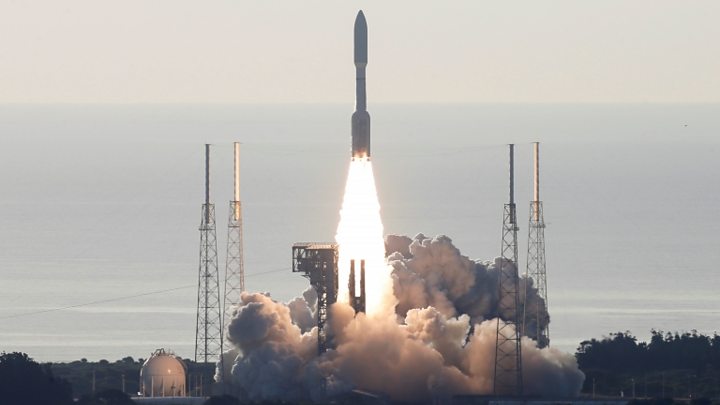
Finally there’s good news in the preparations of the Lucy space probe for its mission to the Trojan asteroids scheduled for launch in October of 2021. Despite problems caused by the Covid-19 virus on 27 July the mission planners passed their System Integration Review. This will now allow assembly of the space probe to begin at Lockheed Martin’s Space Systems facility in Littleton, Colorado, where all of the mission systems are to be integrated onto the spacecraft’s main bus. Once assembly is completed testing of the entire probe can then begin.

The schedule is tight, the mission planners are hoping to use a flyby of Mars as a gravity boost to speed Lucy on its 12 year mission so if they miss their October 2021 deadline they’ll have to wait another two years to launch. During its mission Lucy will visit as many as seven different asteroids making it in many ways the most complex mission ever attempted.

